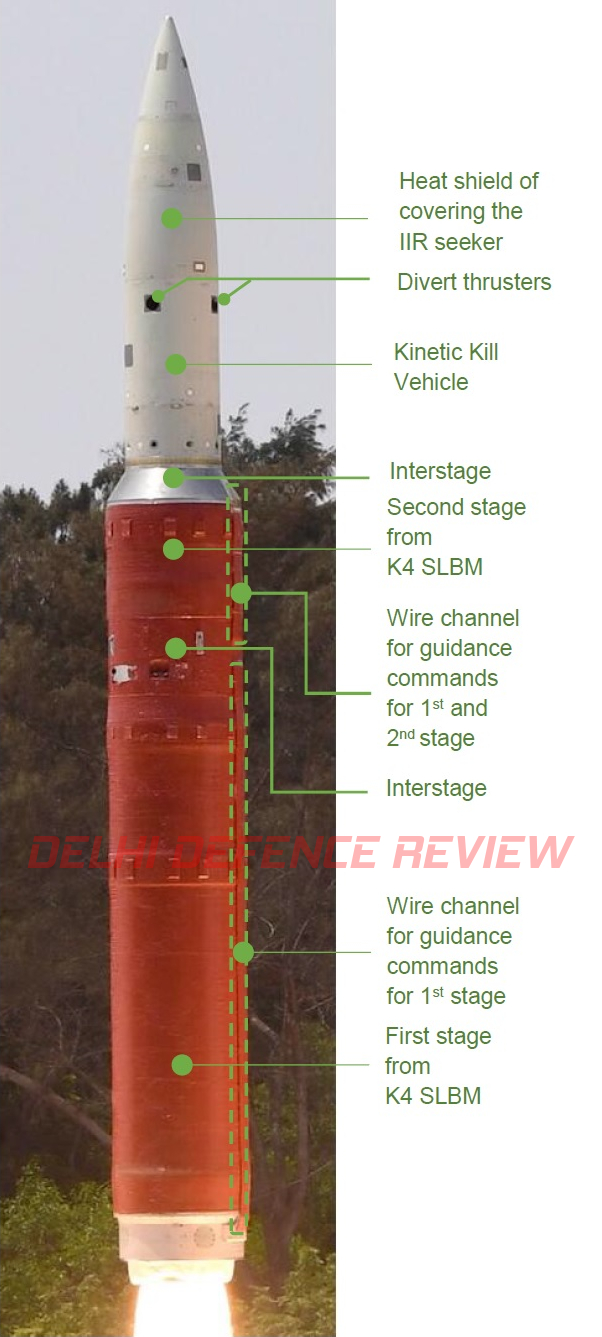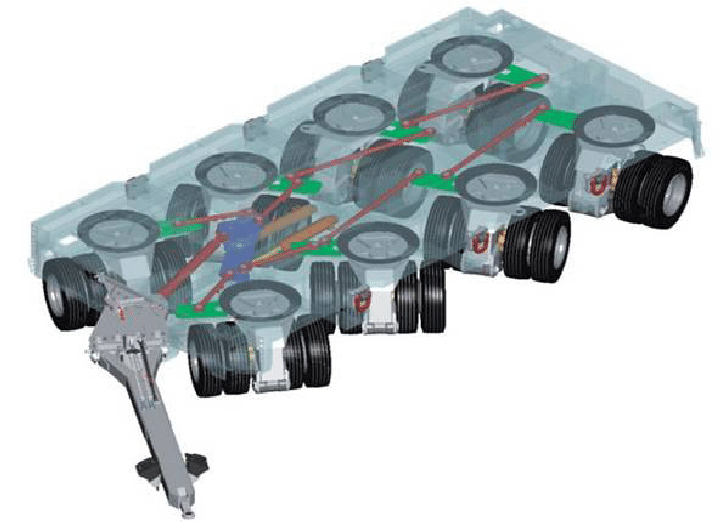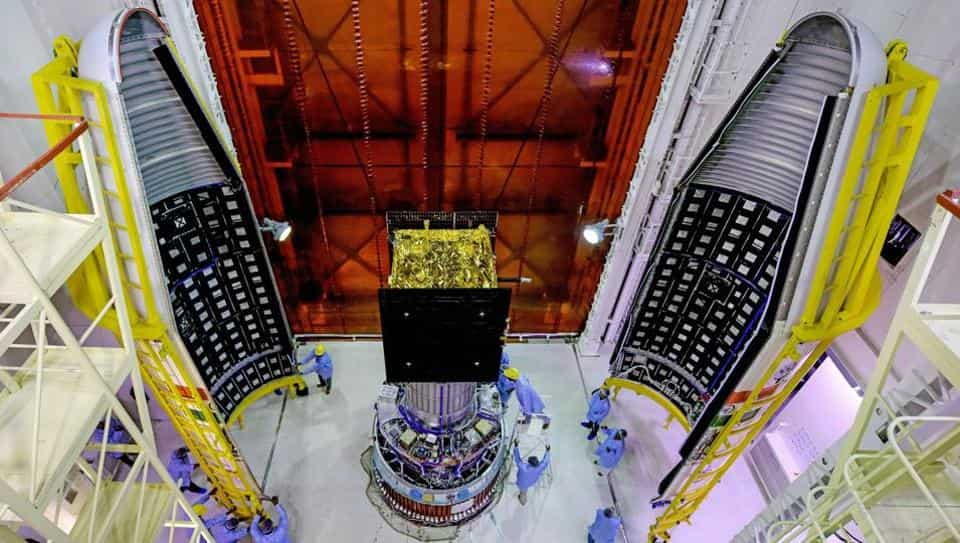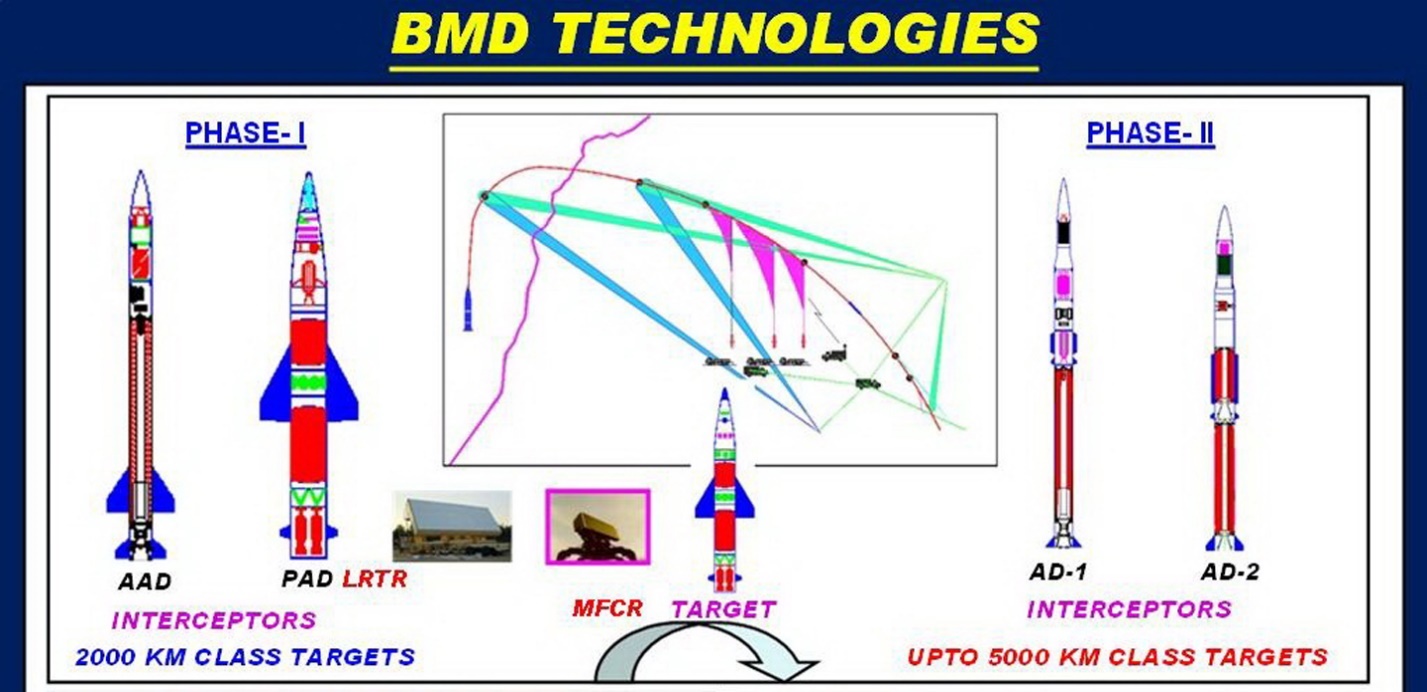On March 27, 2019, India tested its first anti-satellite (ASAT) missile as part of ‘Mission Shakti’ against a “live” satellite launched by it a few months earlier. The repercussions of this test were felt around the globe and marked a significant milestone in India’s march towards becoming a Great Power. However, it is now time to take a closer look at the missile system, called the PDV MK-II, that made it all possible. Using publicly available data and an analysis of the pictures released after the test, an analysis of the characteristics of the PDV MK-II is presented below.
The weapon system
For a successful ASAT demonstration, scientists from the Defence Research & Development Organization (DRDO) had to first ensure that they had a system in hand with the following capabilities:
1. The means to track an orbital object with extreme accuracy.
2. The capability to boost a kinetic kill vehicle (KKV) to the desired altitude.
3. A KKV that was accurate enough to hit a target moving at a relative velocity of nearly 10 km/s with respect to it.
Thankfully, the building blocks for all of the above existed by 2017, which is when the ASAT demonstration was sanctioned by New Delhi. Moreover, thanks to DRDO’s Ballistic Missile Defence (BMD) program all of these were available in a fairly mature form, enabling the India’s first ASAT test to be conducted within less than 20 months from date of sanction.
Through its BMD program, India had already developed the Long Range Tracking Radar (LRTR) which can track a target with a 0.1m2 radar cross section at a range in excess of 1,000 km. Frankly speaking, a satellite is a relatively easy target to track for such an advanced radar system. Firstly, its path is extremely predictable, governed only by the forces of gravity. It does not execute evasive maneuvers like warheads of modern ballistic missile systems. Secondly, a satellite has a much higher cross sectional area, typically close to 1 m2. However, India had only tested targets simulating re-entry vehicles of medium range ballistic missiles, that is targets which were moving at a speed of about 2 km/s. Hence the system had to be upgraded to track targets which were moving much faster, at speeds of around 7 km/s.
When it came to the boosters, the scientists had an even wider choice. Booster stages from the land-based Agni ballistic missiles (BMs) or the K-series submarine launched ballistic missiles (SLBMs) could be used. Based on many simulations, two booster stages of the K-4 missile were chosen. This can be inferred analyzing the pictures of the missile as described in Fig 1. below.

Fig 1.: A pictorial analysis of the various stages of the PDV MK-II. The original image is courtesy DRDO.
The third stage of the missile is derived from the PDV vehicle. The width of the heat shield around this stage is known to be under a meter. Performing a pixel width comparison of this heat shield with that of booster stages, it is evident the that the boosters have a diameter of 1.4 meters (m). That there are two stages below the PDV-derived third stage can be inferred by noticing the break in the wire channel running down the side of the boosters. These wires carry the control commands from the topmost stage to the thrust control systems of the booster stages. The break marks the inter-stage between the first and the second stage. The fuel tank of the first stage of the K-4 SLBM is 1.4 m wide and 5.5 m long. The second stage is 1.4 m wide and 1.4 m long. These exactly match the ratios of the fuel tanks of the ASAT missile. Another tell-tale sign that these stages come from the K4 SLBM is that the missile is free standing at launch. i.e. the swing arm used to erect the missile is set back to its horizontal position. This is not the case with any of the Agni missile launches.
Based on the above analysis, the following characteristics of the missile emerge. It is a three stage missile with a diameter of 1.4 m and a length of nearly 13.2 m. The first two stages cumulatively weigh around 17.2 tonnes (t) carrying 16.7 t of fuel. The PDV-derived third stage which includes the KKV weighs around 1.8 t, bringing the overall weight of the missile to around 18.5 t. Such a missile should be able to take out targets up to an altitude of 1000 km, as was hinted at by DRDO Chairman Sateesh reddy, after the test.
As mentioned above, the final stage of the missile contains the KKV, which is the business end of the missile. Before the missile is launched, the fire control system estimates an approximate impact point based on the projected flight path of the target and the flight characteristics of the missile. This estimated flight path is uploaded onto the flight computer which is also housed in the third stage of the missile before the launch. After launch, the flight computer guided by a highly accurate ring laser gyroscope based inertial navigational system (RLG-INS) provides control commands to the thrust vectoring systems of the first and second stage to guide the rocket along this pre-calculated path.
The booster stages separate after burn up. The heat shield also separates once the missile has cleared the atmosphere. Once the kill vehicle is in the vicinity of the impact point, it switches on its Imaging Infrared (IIR) seeker. Details of this seeker and its development were presented in our previous article covering the PDV BMD missile.
Once the target is locked, the kill vehicle homes onto its target for a hit-to-kill (HTK) interception. The accuracy needed to achieve such a kill is, let us say, non-trivial. The two projectiles approach each other at nearly 10 km/s, whereas the accuracy of the hit is measured in centimeters. To achieve such accuracy, four divert thrusters placed at 90 degrees to each other are used. These thrusters create short and precise rocket pulses to modify the attitude of the KKV or create a translation if needed. In addition to these four main-thrusters, 8 more ports are visible along the base of the third stage. It is unclear whether these ports are part of a longitudinal motor placed at the base of the third stage.
Mobility

Figure 2. Schematic view of a Hydraulic modular trailer model with four rows of wheels [1].
The entire system was been made road mobile, signaling an intent to operationalize the system and not merely test it. The transporter erector launcher (TEL) system for the PDV MK-II is a new trailer developed by DRDO’s Vehicle Research & Development Establishment, Tata Power SED and Tratec Engineers Pvt. Ltd. Although the TEL is new, it shares the same features as India’s other land based ballistic missile systems. In this case, the trailer uses three rows of 8 wheels which are mounted on hydraulic arms that are independently steered and suspended. The result is a trailer with extremely high mobility, very low vibrations and very short turning radius. Going by generic standards, each row of wheels should be able to handle 40 t of payload. Therefore, handling the weight of this missile and its supporting systems using three such rows should be well within its capabilities. The trailer will be hauled by a high power Volvo or Tatra prime mover. For illustrative purposes, Figure 2. above shows a schematic diagram of such a hydraulic modular trailer with four rows of wheels.
The test
Roughly two months before the actual test, the Indian Space Research Organization (ISRO) launched the target satellite, Microsat-R, into a 274 km sun synchronous orbit on January 24, 2019. The satellite had a mass of nearly 740 kg and although its launch was covered in great detail, details of the satellite were left out. Only one picture of the satellite integrated with the fourth stage of the rocket, and a grainy video of its separation was published. Newspaper articles [3] have covered how the mission was kept a secret within DRDO, but how this secret was maintained inside ISRO remains a mystery. Ironically enough, one of the objectives of the ISRO launch mission was to reuse the fourth stage as an orbital satellite to reduce space debris.

Figure 3. Microsat-R integrated on PSLV C-44. Pic courtesy ISRO.
On March 27, 2019 at about 11:08 AM, this satellite was identified as a target of the ASAT test setup. The signal to launch was issued within 30 seconds. The missile launch occurred one minute later. The first stage burned out after 75 seconds and at an altitude of 45 km. The second stage then ignited and burned for about 30 seconds. It separated out at an altitude of roughly 110 km. The third stage continued to rise and reached a speed of roughly 3 km/s. It acquired the target seconds before impact and hit it within a few centimetres off the center. The whole sequence of target acquisition to destruction was accomplished within less than four and half minutes. The flight time of the missile was 2 minutes and 48 seconds.
Video: The PDV MK-II/XSV-1 as it speeds towards the Microsat-R in low earth orbit.
The test parameters were chosen with extreme caution to minimize the hazard of debris after the impact. Although the missile can take out a satellite at 1000 km, the satellite was purposely injected into a circular orbit very close to the outer atmosphere. This decreased the time for reentry of the particles into the atmosphere. It is currently estimated that Microsat-R disintegrated into about 270 chunks, with a cross section of 10 cm2 or above. All of these are predicted to re-enter the earth’s atmosphere in less than 45 days.
This signals another aspect of the test: the KKV most probably impacted the satellite on its way down. Most of the debris from such an impact are boosted to a lower atmosphere interesting orbits. Therefore, this test is akin to Operation Burnt Frost, conducted by the United States to shoot-down a defunct satellite at nearly the same altitude as the Mission Shakti test. That satellite was about 3 times larger than Microsat-R and contained a significantly higher volume of unused fuel. The satellite disintegrated into over 360 pieces most of which entered lower atmosphere-intersecting orbits within a couple of months. However, one of the projectiles was reportedly boosted to a 3000 km orbit and is yet to re-enter the atmosphere. In contrast, the Chinese chose to shoot down a weather satellite at an altitude of 865 km. The result was a large debris field, a significant part of which is still circling the earth, unlikely to decay anytime in the next couple of decades.
The future
It is very unlikely that India will conduct another ASAT test in the near future, especially against a real satellite. There is simply no need: India has already demonstrated its capability which is verifiable by all the majors power in the world. If any further refinements are required, the tests are likely to be against electronic targets, may be at higher orbits. In any case, as discussed earlier, the system will be operationalized as a road mobile system with a very small footprint.
There are major ramifications of the technologies developed for this system on other Indian missile systems, especially future BMD systems. India’s Phase I of the BMD system is well proven through numerous tests. In Phase II, India aims to acquire defenseive capabilities against re-entering warheads boosted by intercontinental ballistic missiles in the exo-atmospheric region. Therefore, all the technologies developed for Mission Shakti directly feed into this phase of the program. In fact, the mission capabilities are so similar, that DRDO used it as a cover for the development Mission Shakti. What remains to be seen is whether DRDO develops custom boosters for the Phase II stage. The earlier published plan envisaged the development of sleeker fast burning boosters that exhibit greater acceleration and even lower reaction times. (See Fig 4. below)

Figure 4. Phase II of Indian BMD system. Courtesy: Lectures by VK Saraswat.
The RLG-INS of the PDV Mk-II is the most advanced of any Indian missile designed till date. This is likely to be adapted to long range ballistic missile to increase their accuracy as well.
Finally, India’s own ASAT test highlights the growing need to be able to replace a disabled satellite quickly, that may have fallen prey to an enemy ASAT launch. An initial example of such ‘operationally responsive’ launch capability may become available to the Indian military once ISRO operationalizes its Small Satellite Launch Vehicle (SSLV) in July 2019. This vehicle should be able to launch satellites in the 500-1000 kg range to low earth and sun synchronous orbits. ISRO believes that the assembly and launch of SSLV can be executed within 3-days. The future of Space as a contested domain is already here. And for once, India may be ready for it.
Indranil Roy is an aerospace enthusiast and a part time processor chip designer.
References
[1] Dipeshkumar, Chauhan & B. Soni, S & Gohil, Ashish. (2012). Parametric Optimization of Hydraulic Modular Trailer Frame Using ANSYS (APDL).
[2] Anantha, Krishnan M. (2019). DRDO’s top secret A-SAT mission codenamed ‘Project XSV-1’. Last accessed at: https://english.manoramaonline.com/news/nation/2019/03/28/drdo-top-secret-asat-mission-project-xsv1-onmanorama-exclusive.html
© Delhi Defence Review. Reproducing this content in full without permission is prohibited.































